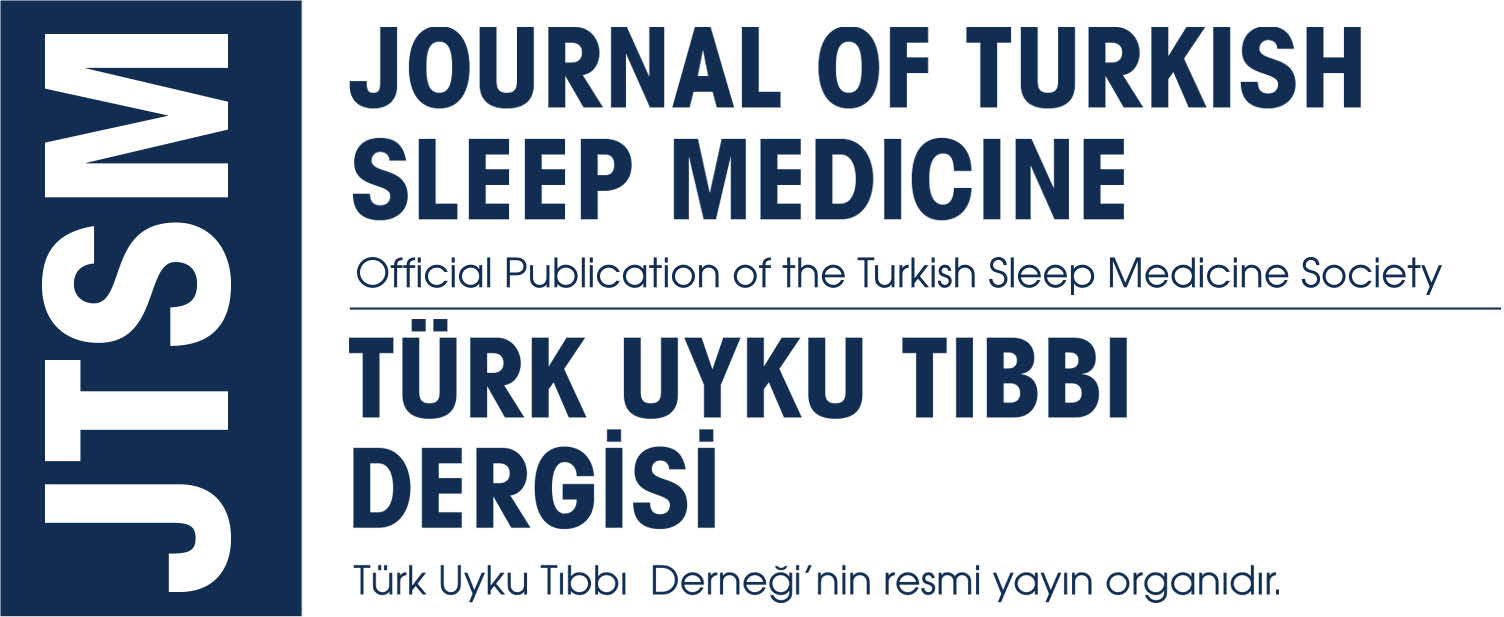ABSTRACT
Conclusion:
The results of this study revealed that OSAS severity was higher in patients with pos-OSAS than in those with REM-OSAS. Body position plays a more significant role than sleep stage on OSAS severity. REM-OSAS was more common in female patients, whereas pos-OSAS had a male predominance. Patients diagnosed with REM-OSAS had a significant tendency to be overweight. Oxygen saturation was lower in patients with REM-OSAS than in those with pos-OSAS.
Results:
A total of 300 patients with OSAS were included in the study, of which 60 (20%) were diagnosed with REM-OSAS and 75 (25%) with pos-OSAS. REM-OSAS had a female predominance, whereas pos-OSAS demonstrated a male predominance (p<0.001). Body mass index was significantly higher in patients with REM-OSAS than in those with pos-OSAS (p=0.003). OSAS severity was found to be higher in patients with pos-OSAS than in those with REM-OSAS (apnoea-hypopnea index: 23/hour, p<0.001). The supine and REM sleep pulse rates were significantly higher and the minimum oxygen saturation level was significantly lower in patients with REM-OSAS than in those with pos-OSAS (p<0.001, p=0.010).
Materials and Methods:
This study included all patients diagnosed with REM-OSAS and pos-OSAS who were examined at our sleep and disorders unit between January 2019 and November 2020. All patients underwent a full-night polysomnographic examination.
Objective:
In this study, we aimed to compare the clinical and polysomnographic features of rapid eye movement sleep-dependent obstructive sleep apnoea syndrome (REM-OSAS) and positional OSAS (pos-OSAS).
Keywords:
Obstructive sleep apnoea syndromes, REM sleep, supine position, polysomnography
References
1Fenik VB, Davies RO, Kubin L. REM sleep-like atonia of hypoglossal (XII) motoneurons is caused by loss of noradrenergic and serotonergic inputs. Am J Respir Crit Care Med 2005;172:1322-30.
2Findley L, Wilhoit S, Suratt P. Apnea duration and hypoxemia during REM sleep in patients with OSA. Chest 1985;8:432-6.
3Haba-Rubio J, Janssens JP, Rochat T, Sforza E. Rapid eye movement related disordered breathing: clinical and polysomnographic features. Chest 2005;128:3350-7.
4Cartwright RD. Effect of sleep position on sleep apnoea severity. Sleep 1984;7:110-4.
5Oksenberg A, Silverberg DS, Arons E, Radwan H. Positional vs non positional obstructive sleep apnoea patients: anthropomorphic, nocturnal polysomnographic and multiple sleep latency test data. Chest 1997;112:629-39.
6Koo BB, Dostal J, Ioachimescu O, Budur K. The effects of gender and age on REM-related sleep-disordered breathing. Sleep Breath 2008;12:259-64.
7American Academy of Sleep Medicine. İnternational classification of sleep disorders, 3. ed. Darien, IL: American Academy of Sleep Medicine 2014.
8Berry RB, Brooks R, Gamaldo CE, Harding SM, Marcus CL and Vaughn BV for the American Academy of Sleep Medicine. The AASM Manual for the Scoring of Sleep and Associated Events: Rules, Terminology and Technical Specifications, Version 2.0. Darien, Illinois: American Academy of Sleep Medicine; 2012.
9Gillman A, Roebuck T, Ho S, van Braak E, Naughton MT. Comparison of supine-only and REM-only obstructive sleep apnoea. Sleep Med 2012;13:875-8.
10Lee SA, Paek JH, Chung YS, Kim WS. Clinical features in patients with positional obstructive sleep apnea according to its subtypes. Sleep Breath 2017;21:109-17.
11Liu Y, Su C, Liu R, Lei G, Zhang W, Yang T, Miao J, Li Z. NREM-AHI greater than REM-AHI versus REM-AHI greater than NREM-AHI in patients with obstructive sleep apnea: Clinical and polysomnographic features. Sleep Breath 2011;15:463-7.
12Su CS, Liu KT, Panjapornpon K, Andrews N, Foldvary-Schaefer N. Functional outcomes in patients with REM-related obstructive sleep apnea treated with positive airway pressure therapy. J Clin Sleep Med 2012;8:243-7.
13Mokhlesi B, Punjabi NM. “REM-related” obstructive sleep apnea: An epiphenomenon or a clinically important entity? Sleep 2012;35:5-7.
14Oktay Arslan B, Yalnız Ö, Uçar Hoşgör ZZ. Genel ve Sınırlı Tanı Kriterlerinin REM İlişkili Obstrüktif Uyku Apne Sendromu Üzerine Etkisinin İncelenmesi: Genel ya da Sınırlı? J Turk Sleep Med 2020;3:124-30.
15Popovic RM, White DP. Upper airway muscle activity in normal women: Influence of hormonal status. J Appl Physiol 1998;84:1055-62.
16Guidozzi F. Sleep and sleep disorders in menopausal women. Climacteric 2013;16:214-9.
17Oksenberg A, Arons E, Nasser K, Vander T, Radwan H. REM-related obstructive sleep apnea: The effect of body position. J Clin Sleep Med 2010;6:343-8.
18O’Connor C, Thornley KS, Hanly PJ. Gender differeces in the polysomnographic features of obstructive sleep apnea. Am J Respir Crit Care Med 2000;161:1465-72.
19Ozcelik HK, Akkoyunlu ME, Bostanlı P, Bayram M, Atahan E, Sezer M, Karaköse F, Kart L. The frequency and properties of REM related obstructive sleep apnea among the patients with mild related obstructive sleep apnea. Tuber Toraks 2013;61:283-7.
20Uzer F, Toptas AB, Okur U, Bozkurt S, Dogrul E, Turhan M, Cilli A. Comparison of positional and rapid eye movement-dependent sleep apnea syndromes. Ann Thorac Med 2018;13:42-7.
21Bayram NA, Diker E. Obstructive sleep apnea syndrome and cardiac arrhythmias. Arch Turk Soc Cardiol 2008;36:44-50.
22Muraki M, Kitaguchi S, Ichihashi H, Haraguchi R, Iwanaga T, Kubo H, Higashiyama A, Tohda Y. Apnoea-hypopnoea index during rapid eye movement and non-rapid eye movement sleep in obstructive sleep apnoea. J Int Med Res 2008;36:906-13.



